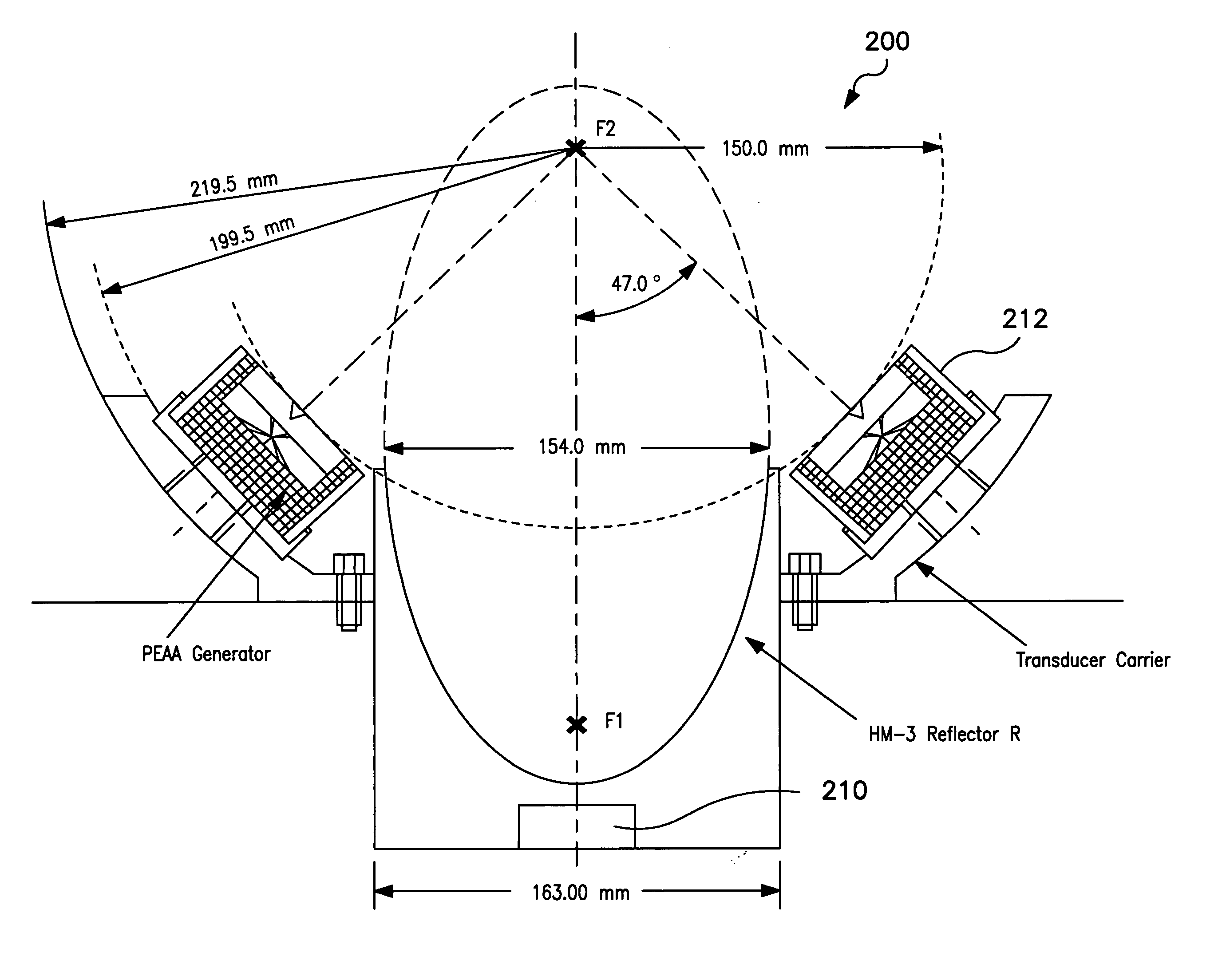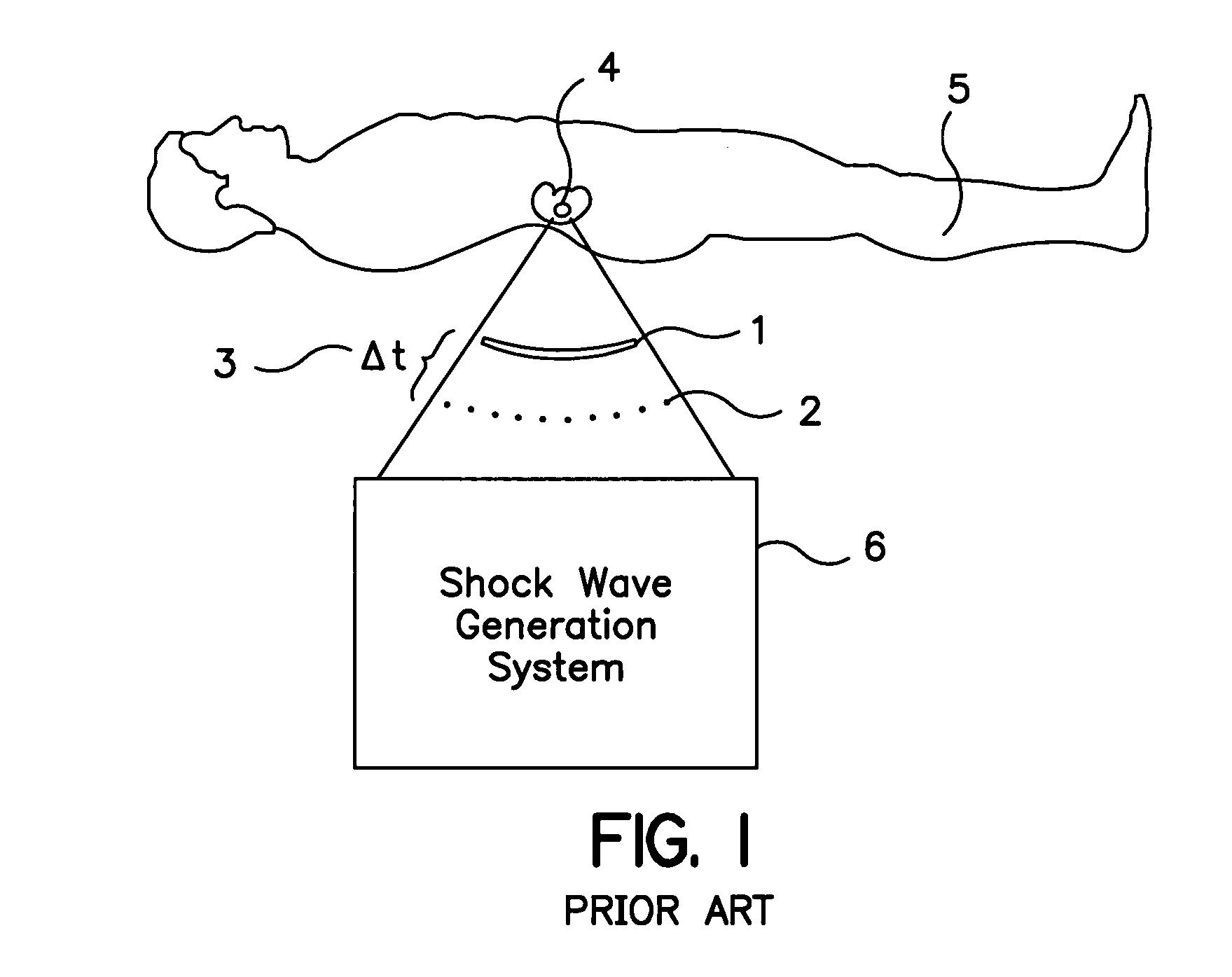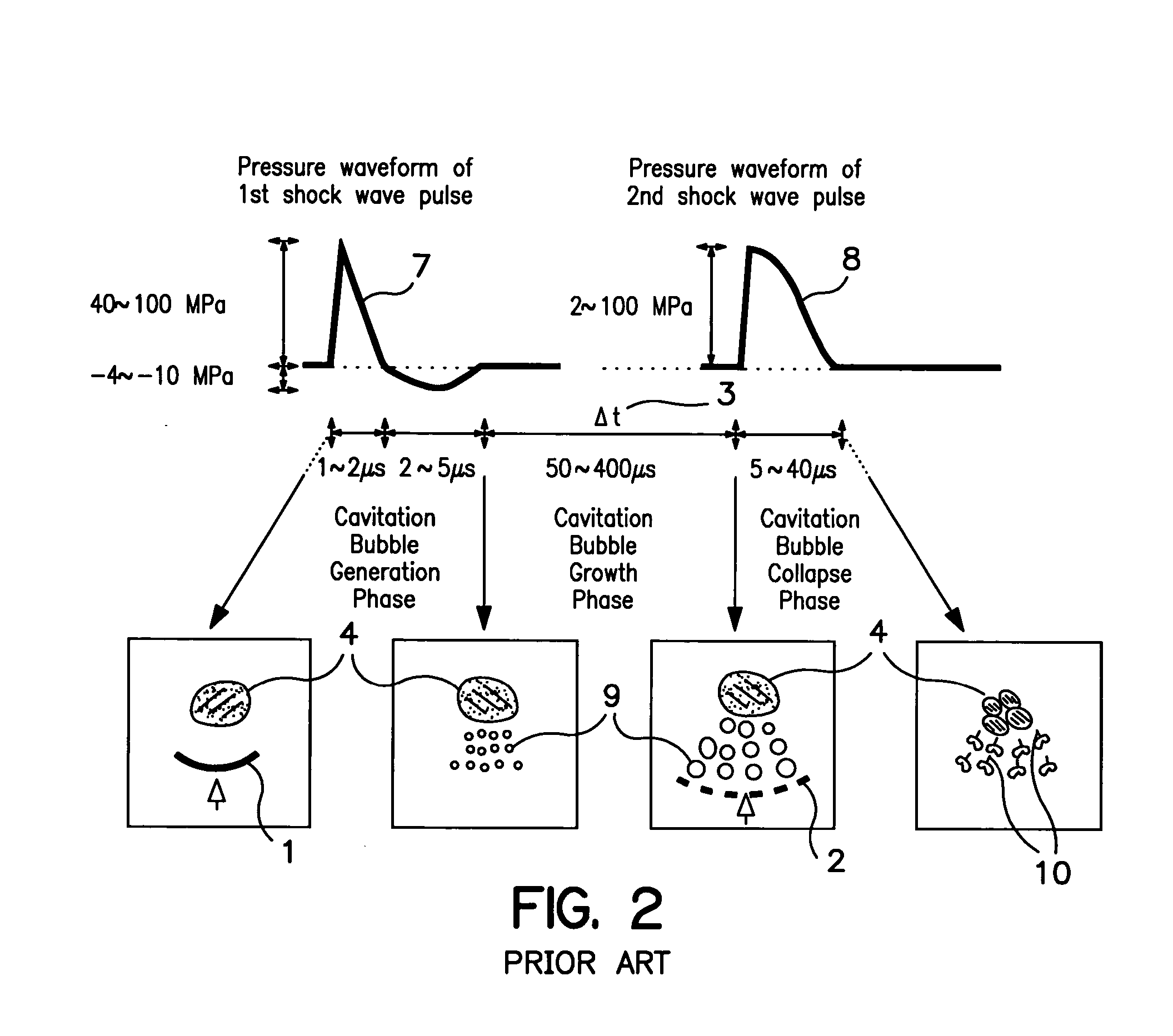Apparatus for improved shock-wave lithotripsy (SWL) using a piezoelectric annular array (PEAA) shock-wave generator in combination with a primary shock wave source
shock wave generator technology, applied in the field of apparatus for improving shock wave lithotripsy (swl) using a piezoelectric annular array (peaa) shock wave generator in combination with a primary shock wave source, can solve the problems of wave emission, stone fragmentation, tissue injury, etc., to improve the comminution of stones, improve the comminution efficiency, and reduce tissue injury
- Summary
- Abstract
- Description
- Claims
- Application Information
AI Technical Summary
Benefits of technology
Problems solved by technology
Method used
Image
Examples
Embodiment Construction
A. Prior Art Combined EH and PEAA Generator
[0024]FIG. 1 shows a method of using two shock wave pulses 1, 2 separated by a specified time delay Δt 3. The shock wave pulses 1, 2 are produced by a shock wave generation system 6 and aimed confocally at a target concretion 4 inside a living being 5, for the comminution of the target concretion 4 with improved fragmentation efficiency and reduced tissue injury. These two pulses consist, respectively, of a first shock wave pulse 1 and second shock wave pulse 2, separated in time by a time delay Δt 3. It has been discovered that for optimal effect, this delay should be 50 to 400 microseconds (μs).
[0025] Also, another prior art technique is illustrated in FIG. 2, where the pressure waveform 7 of the first shock wave pulse 1 consists of a compressive phase with a positive peak pressure amplitude in the 20 to 100 million pascals (MPa) range and with a positive duration of 1 to 2 microseconds, followed by a tensile phase with a negative peak p...
PUM
 Login to View More
Login to View More Abstract
Description
Claims
Application Information
 Login to View More
Login to View More - R&D
- Intellectual Property
- Life Sciences
- Materials
- Tech Scout
- Unparalleled Data Quality
- Higher Quality Content
- 60% Fewer Hallucinations
Browse by: Latest US Patents, China's latest patents, Technical Efficacy Thesaurus, Application Domain, Technology Topic, Popular Technical Reports.
© 2025 PatSnap. All rights reserved.Legal|Privacy policy|Modern Slavery Act Transparency Statement|Sitemap|About US| Contact US: help@patsnap.com



